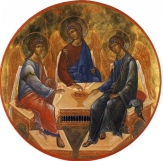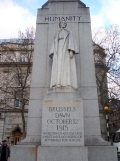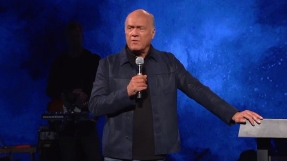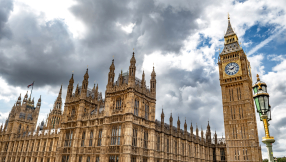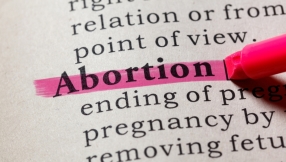
Suffragette launches today in cinemas across the UK and the Twittersphere is awash with acclamation, if not for the film itself, then for the movement which eventually led to women being granted the vote in 1919.
However the Church has not always had an easy relationship with women's suffrage. After Emmeline Pankhurst formed her splinter group from the more peaceful National Union of Women's Suffrage, churches actually became a target for her more radical Women's Social and Political Union.
The Church of England was seen as opposing the movement and as a result, parish churches were often set on fire. On 1 June 1914 Wargrave Church became one such victim when it was burnt down by two suffragettes. Later on in June 1914 a bomb was placed in Westminster Abbey causing minor damage to the Coronation Chair and the 'Stone of Destiny' beneath it. Several other bomb and arson attacks targeted churches throughout the suffrage campaign, including one bomb in St Paul's Cathedral.
The Church was seen as part of the establishment elite that suffocated rather than encouraged equal engagement and participation. Indeed Church teaching on women was seen as fuelling inequality throughout society. Women were barred from ministry and the Church of England refused to remove the bride's vow to "obey" her husband from the marriage service. Furthermore its Bishops in the House of Lords did not oppose the controversial 'Cat and Mouse Act' which facilitated the harsh treatment of suffragettes in prison. As long as there was theological justification for political inequality, the suffrage movement could not hope to change the status quo.

But outside the main institution of the Church of England, many individual Anglican clergy and parishioners supported women's suffrage. There were many devout Christians in the suffragists (the peaceful sister movement to the suffragettes) including Maude Royden and Louise Creighton who helped align the National Council of Women behind women's suffrage.
Additionally there was the prominent Church League for Women's Suffrage (CLWS), formed in 1909 by Rev Claude Hinscliffe and his wife Gertrude. Many suffragists who drew on theological reasons to support the campaign joined the group which, alongside securing the parliamentary vote for women, sought to draw out what Hinscliffe called the "deep religious significance of the women's movement."
In 1912 the CLWS had more than 3,000 members and by 1914 this had increased to over 5,000 church men and women. Alongside other groups such as the Free Church League for Women's Suffrage and the Catholic Women's Suffrage League, there was a significant body of clergymen and laymen throughout Britain who supported it.
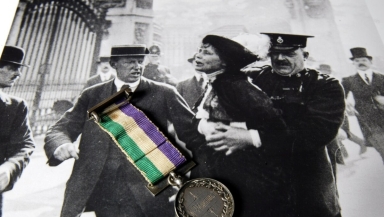
But the institution of the Church of England continued to be opposed. Their stance is even more surprising when you realise the Archbishop of Canterbury at the time, Randall Davidson, privately was a passive suffragist.
This is not an exception. The institutionalised church is rarely, if ever, at the forefront of social change. While Christians have often been champions for social causes such as the slave trade, worker's rights and equal votes, they have operated outside the institution and either formed separate pressure groups or campaigned as individual Christians without the Church's backing.
Normally the great edifice of the Church lumbers along, a few years behind public opinion, sometimes catching up but sometimes ignoring it and resolutely sticking to its guns. Like a vast oil tanker, it is not easily tossed by the waves of popular sentiment and takes a long time and a great deal of effort to alter direction. For this reason many criticise the existence of a Church as an institution, pointing to Christ's radical social teaching and say that the institution of the Church hinders it from its true calling.
I am not so sure. It seems to me that one of Christ's remaining unanswered prayers is for unity. Anglicanism is full of faults and far from perfect but it represents a great attempt at that call to unity. Certainly it is better than most so-called reformist groups who use the most insignificant theological disagreement as an excuse to splinter.
If we are to take unity seriously and have a body, or an institution to represent a vast collection of theological sympathies and styles, I would much rather it is a monolith that trundles along, albeit at a slow pace, but remains unswayed by sentiment.

It is a shame the Church of England rarely, if ever, leads great movements of social change. It would be stronger if, occasionally, it was more outspoken. But I have enormous respect for how it seems untouched by what the world thinks and takes time to debate and consider carefully the issue at stake.
Sometimes, as in the case of women's suffrage, this means it changes far too slowly and occasionally years after the public's mind has already been made up. But there is something reassuring that the Church seems undeterred by this and continues to take its time to consider, reflect and deliberate. The great strength of this is that rides the transient swells of opinion without being affected but takes seriously the surges that are prolonged, consistent and, therefore, have more substance.
Heavily laden with a wide collection of views and traditions, the Church of England has a wide turning circle and a vast stopping distance. It should have supported women's suffrage long before it did. But eventually, with much consideration, it got there. This seems to be a pattern for much of the Church's engagement with change and for me, that is incredibly reassuring.










